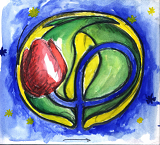27 #include <tulip/tulipconf.h>
28 #include <tulip/Observable.h>
29 #include <tulip/Plugin.h>
40 static const std::string VIEW_CATEGORY =
"Panel";
76 QList<tlp::Interactor*> _interactors;
80 QSet<tlp::Observable*> _triggers;
100 return ":/tulip/gui/icons/32/plugin_view.png";
107 virtual QGraphicsView* graphicsView()
const=0;
114 QList<tlp::Interactor*> interactors()
const;
130 virtual QList<QWidget*> configurationWidgets()
const;
138 virtual QString configurationWidgetsStyleSheet()
const;
156 QSet<tlp::Observable*> triggers()
const;
162 void treatEvents(
const std::vector<Event> &events);
169 virtual QGraphicsItem* centralItem()
const;
176 virtual QPixmap snapshot(
const QSize& outputSize=QSize())
const=0;
183 void showContextMenu(
const QPoint& point,
const QPointF &scenePoint);
189 virtual void undoCallback();
196 virtual void applySettings();
205 virtual void centerView(
bool graphChanged =
false);
212 void setInteractors(
const QList<tlp::Interactor*>&);
239 virtual void draw()=0;
253 virtual void setupUi()=0;
259 virtual void treatEvent(
const Event&);
282 void clearRedrawTriggers();
287 void emitDrawNeededSignal();
302 void interactorsChanged();
309 virtual void interactorsInstalled(
const QList<tlp::Interactor*>& interactors);
329 virtual void graphDeleted(
tlp::Graph* parentGraph)=0;

